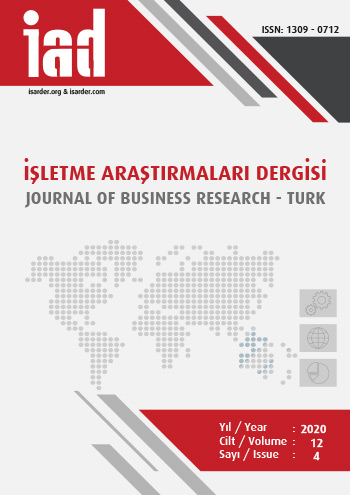Sosyal Sorumlu Yatırım Bağlamında Pay Senedi Getirisinin Makine Öğrenmesi Yöntemleri ile Tahmin Edilmesi: Borsa İstanbul Örneği
Estimating using Machine Learning Methods of Stock Return in the Context of Socially Responsible Investment: Borsa İstanbul Example
Author(s): Baris AksoySubject(s): Financial Markets, Accounting - Business Administration, ICT Information and Communications Technologies, Business Ethics
Published by: Orhan Sağçolak
Keywords: Socially Responsible Investment; Prediction of Stock Return; Machine Learning Methods; BIST Sustainability Index; Borsa İstanbul;
Summary/Abstract: Purpose – In this study, it is aimed to predict the average stock returns of the companies within the scope of the sample in the next year by using the year-end financial statement data and economic indicators of the manufacturing industry companies in BIST 30/100 indexes and the sustainability index. The other aim of the study is to compare the prediction performance of the methods used in the study under the distinctive features of the methods. Design/methodology/approach – 2011-2019 average annual stock returns were predicted using Artificial Neural Networks (ANN), Classification and Regression Trees (CART) and K Nearest Neighbor Algorithm (KNN) after taking the year-end financial statements and annual average economic indicators of 13 companies within the scope of the sample for the period of 2010-2018. In the study, 10-fold cross validation method was used for optimal data distribution and parameter optimization to determine the model with the highest prediction success in the given parameter ranges. The performance of the methods was compared with the ROC curve. Findings – As a result of the analysis, CART (94.87%), ANN (94.02%) and KNN (92.31%) achieved overall prediction and classification accuracy. It was remarkable that ANN, CART, KNN predicted samples with negative returns from 20% to 50% with 80%, 100% and 100% prediction accuracy, respectively and KNN, ANN, CART predicted samples with positive returns from 20% to 50% with 100%, 96.55% and 96.55% prediction accuracy, respectively. “Return On Equity” and “Market Value/Book Value” were found as important variables dividing the data in the creation of the CART decision tree. Discussion – All methods used in this study achieved classification and prediction success by obtaining more than 90% overall prediction accuracy. Gaganis (2009) stated that prediction accuracy of over 75% was a good result in the field of social sciences. According to Gaganis (2009) classification, ANN, CART and KNN analysis results in this study can be evaluated as very good.
Journal: İşletme Araştırmaları Dergisi
- Issue Year: 12/2020
- Issue No: 4
- Page Range: 3859-3878
- Page Count: 20
- Language: Turkish

